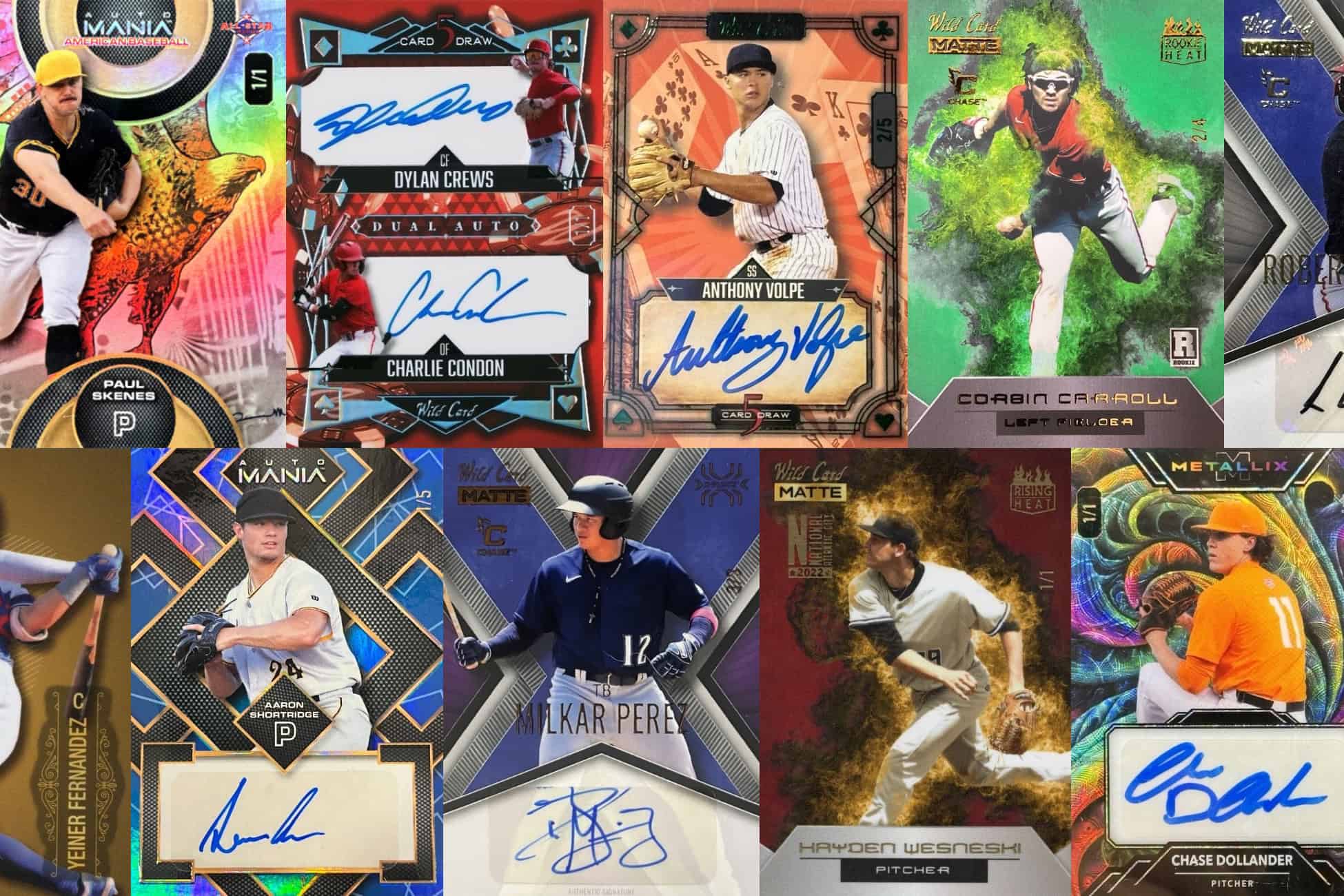For over 75 years, baseball card companies have vied for a place in the hearts (and wallets) of enthusiasts. Among these, Wild Card trading cards has carved out a unique, albeit sometimes debated, position. This article will delve into the intriguing journey of this company, exploring its origins and the various iterations it has undergone throughout its existence. From its initial foray into the market to its more recent resurgence, we will examine the key aspects that define Wild Card trading cards, and distinguish them within a competitive landscape.
This exploration will encompass a detailed look at the diverse range of products that Wild Card has produced, highlighting the trends and characteristics that have become synonymous with their releases. We will analyze their focus on autographs, the proliferation of parallel variations, and their distinctive approach to card design. Furthermore, we’ll address the company’s unique position within the overall card industry, considering factors such as licensing and collector perception. By examining these elements, we aim to provide a comprehensive understanding of Wild Card’s contribution to the hobby.
Wild Card Trading Cards: A Brief History
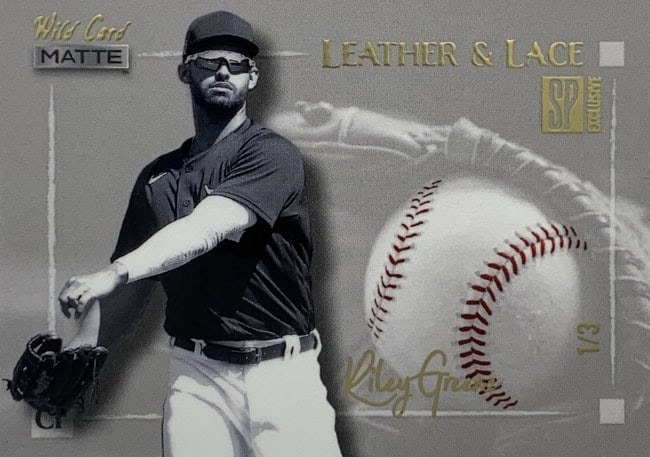
Unlike some of the long-established giants in the sports card industry, Wild Card’s history is a bit more fragmented. It has also been marked by periods of absence and resurgence. The company first emerged in the mid-1990s, a time of significant growth and change within the hobby. Founded by Tom Geideman, Wild Card aimed to differentiate itself through innovative designs and a focus on parallels and chase cards.
One of Wild Card’s early hallmarks was its “Stripe” parallel program on football cards. This multi-tiered parallel system, with increasingly rare striped versions of base cards, was a novel concept at the time. It generated considerable buzz among collectors. The thrill of pulling a rare, multi-striped parallel added an exciting chase element to their products.
However, the initial run of Wild Card trading cards was relatively short-lived. The company eventually ceased production for a significant period, never having dabbled in baseball cards. The reasons for this hiatus are not extensively documented, but it coincided with a general cooling of the sports card market after the boom of the early to mid-1990s.
Wild Card made a notable return to the trading card scene in 2021. This relaunch signaled a renewed commitment to the hobby, with the company stating its intention to bring “new and exciting ideas” to the industry. This is reminiscent of its earlier innovative spirit. The comeback aimed to recapture some of the nostalgia associated with the brand while also appealing to a new generation of collectors.
Baseball Card Product Lines
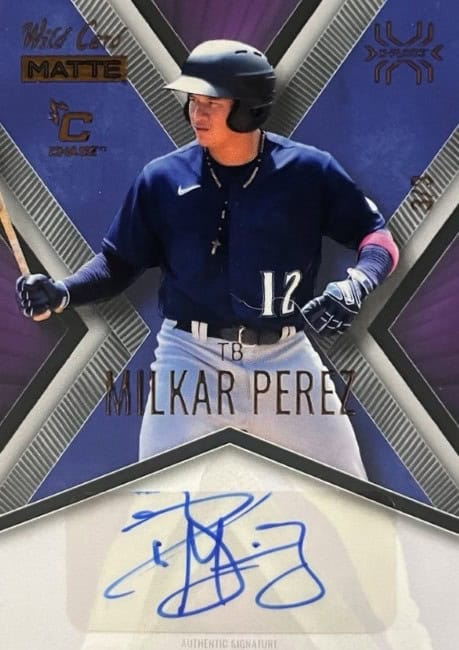
Since its resurgence, Wild Card has released a variety of baseball card products, often focusing on autographs and numbered parallels. Examining their recent offerings provides insight into their current market strategy:
Wild Card Matte Baseball
Wild Card Matte Baseball is a prospect-focused release that showcases up-and-coming amateur talent, particularly players eligible for the MLB Draft. The set is known for its premium matte finish. This gives it a distinct look and feel compared to glossier products on the market. Matte Baseball typically includes a mix of base cards, parallels, and autographs. There is an emphasis on short-printed chase cards and limited-numbered versions. It’s aimed at collectors who like to speculate on the future of baseball’s next big stars.
Wild Card Alumination Baseball
Wild Card Alumination Baseball is designed to highlight elite amateur and collegiate players on their way to professional baseball. It features high-end chromium-style card stock and is loaded with color parallels and flashy designs. Insert sets like “AMG,” “Stripes,” and “Firepower” add variety and collectibility. Meanwhile, autographs – either on-card or sticker autos – are a key draw. Alumination Baseball appeals to prospectors looking to grab early cards of potential MLB standouts before they hit the big leagues.
Wild Card AutoMania Baseball
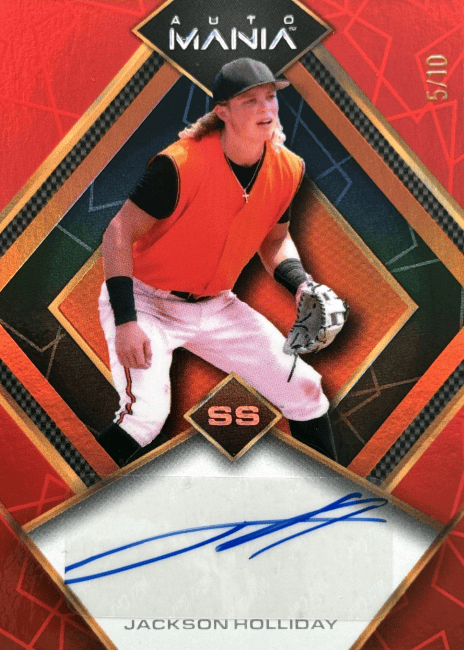
Wild Card AutoMania Baseball is built around the thrill of the autograph. This product is almost entirely made up of autographed cards, with each box delivering multiple signed cards. Like other Wild Card baseball offerings, AutoMania centers on pre-MLB players – often high school, college, or newly drafted talent. It gives collectors early access to a wide variety of future prospects in a signature-heavy format.
Wild Card Five Card Draw Baseball
Wild Card Five Card Draw Baseball is a more boutique-style release that lives up to its name. Each pack contains just five cards, and those cards are typically all hits or limited parallels. The product is geared toward collectors who prefer quality over quantity, offering a curated experience with premium content. While print runs tend to be lower, the card designs are bold and creative. The product often serves as a collector’s gamble on hidden-gem prospects.
Wild Card Illumination Baseball
Wild Card Illumination Baseball is one of the flashiest entries in the Wild Card baseball lineup. It’s filled with bold foil treatments, prismatic effects, and high-energy design. It continues the company’s focus on young talent, showcasing players before they reach the majors. Rare insert sets like “Lightning” and “Explode” offer visual pop and chase appeal, while autograph content rounds out the product. Illumination is a natural choice for collectors who like eye-catching aesthetics paired with prospecting potential.
Wild Card Design & Aesthetic

Wild Card’s design aesthetic is often characterized by a departure from the traditional look of mainstream sports cards. While companies like Topps and Bowman often incorporate team logos, colors, and imagery that strongly tie a player to their franchise, Wild Card frequently opts for bolder, more graphic-driven designs. This can include vibrant colors, unique fonts, and eye-catching patterns, sometimes giving their cards a more modern or artistic feel. This approach allows them to create a distinct visual identity, setting their products apart on the shelves and in collections.
This design philosophy isn’t always universally embraced by collectors. Some appreciate the fresh and contemporary take, finding it a welcome change from the more conventional designs. They might be drawn to the visual impact and the way Wild Card trading cards can stand out. However, other collectors, particularly those who highly value the representation of team identity, may find Wild Card’s aesthetic less appealing. The absence of official team branding can create a disconnect for these collectors, who prefer cards that strongly evoke the visual elements of the sport itself.
Ultimately, Wild Card’s design aesthetic is a key factor that defines the brand and influences collector perception. It represents a conscious choice to prioritize visual impact and individuality, even if it means sacrificing some of the traditional elements. Whether a collector finds this approach appealing often comes down to personal preference.
Wild Card Licensing
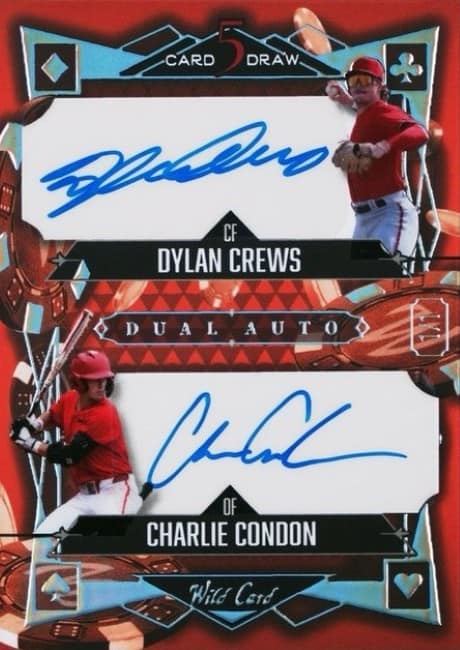
It’s important to note that Wild Card products operate without the official MLB and team logos. This is a crucial distinction from major licensed manufacturers like Topps. Wild Card secures licensing directly with the players, allowing them to feature player images and autographs but not team trademarks,” highlights a fundamental difference in how Wild Card operates within the sports card industry and has significant implications for collectors.
The absence of official MLB and team logos on Wild Card cards stems from their licensing agreements. Companies like Topps pay significant fees to Major League Baseball Properties (MLBP) for the rights to use team names, logos, and trademarks. Wild Card trading cards take a different route. They enter into individual contracts directly with the players themselves. This allows them to feature the likenesses of these athletes in photographs and, importantly, to obtain their autographs for inclusion in their products. However, these individual player deals do not grant them the right to use the intellectual property of the league or its individual teams.
This distinction has several key consequences for Wild Card products and how they are perceived by collectors:
Visual Presentation
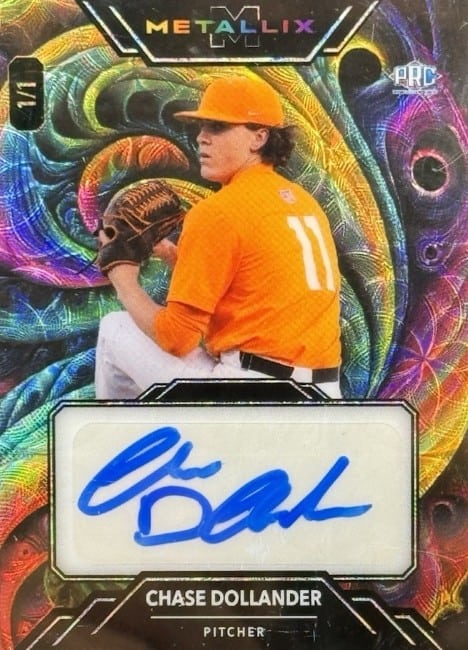
The most immediate impact is the visual appearance of the cards. Players are often depicted in generic uniforms, sometimes with team logos subtly obscured or airbrushed out. This can create a less “official” feel for collectors who value the visual connection to a player’s team. For some, the iconic team colors and logos are an integral part of the collecting experience, and their absence can detract from the card’s appeal. Collectors who primarily focus on building team sets or acquiring cards of their favorite teams may find Wild Card products less appealing. While they might obtain a card of a specific player on their team, the lack of team branding makes it less integrated into a team-centric collection.
Wild Card trading cards often come encapsulated in protective cases, particularly their autographed cards. These are magnetic holders with a tamper-proof seal. This encapsulation provides a layer of protection and preservation, enhancing the card’s appeal to collectors.
Resale Value Considerations
Generally, cards featuring official team logos tend to command higher resale values, especially for established star players. The official licensing adds a layer of perceived authenticity and broader market appeal. While a sought-after autograph on a Wild Card card can still be valuable, the lack of team affiliation can sometimes limit its potential appreciation in the secondary market. However, this isn’t always a hard and fast rule, as exceptionally rare or early rookie autographs from Wild Card can still be highly desirable.
Player Focus
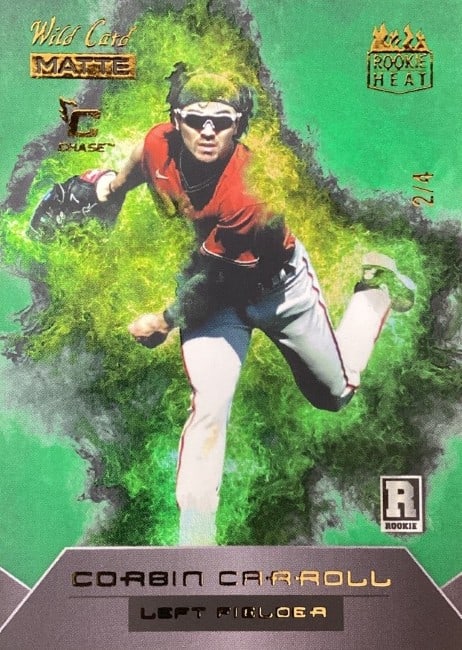
Conversely, Wild Card’s approach places a greater emphasis on the individual player. The focus shifts from team affiliation to the athlete themselves, their image, and their autograph. This can appeal to collectors who prioritize individual players over team sets.
In addition, Wild Card’s strategy of securing deals directly with players can sometimes allow them to feature up-and-coming prospects and rookies before they have significant licensed cards available. This can be attractive to collectors looking to get in early on potential future stars, as these early autographs might become valuable if the player achieves success in the majors.
Cost & Legal Considerations
It’s possible that Wild Card’s direct-to-player licensing model allows them to produce cards at a different cost structure compared to companies paying for MLB-wide licensing. This could potentially translate to different price points for their products, although this isn’t always guaranteed. By operating within the bounds of their player-specific licenses, Wild Card avoids legal issues related to copyright and trademark infringement with MLB. This allows them to continue producing baseball cards while navigating the complex licensing landscape.
Collector Respect & Market Position
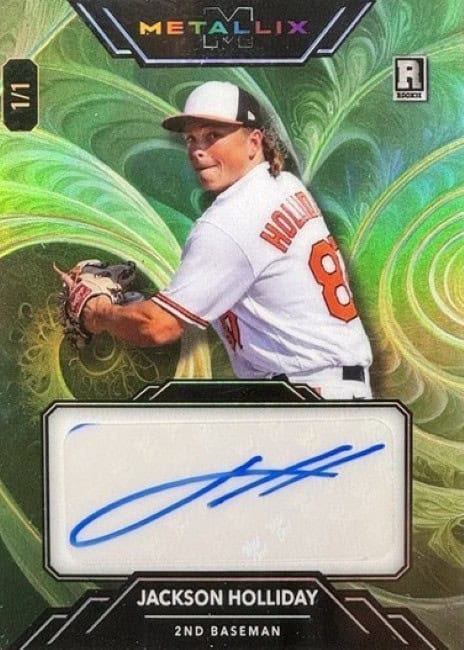
Wild Card trading cards occupy a unique niche by prioritizing direct player relationships over league-wide agreements. This results in products with a distinct visual style and a different appeal compared to officially licensed cards. Collectors need to weigh the importance of official team branding against the potential benefits of autograph content and focus on individual players when considering Wild Card products for their collections.
Some collectors on online forums have noted that while Wild Card designs can be cool and their autograph content appealing, the lack of team logos is a significant negative. There’s a sentiment that these cards are often better suited for personal collections rather than as high-value investments. However, some also point out that certain rare Wild Card rookie autographs, particularly of players who go on to become stars, can still hold and even increase in value.
The company appears to be actively trying to engage with the collecting community, with a presence at card shows and actively-seeking feedback on their products. This engagement could be a positive step in building stronger relationships with collectors.
Conclusion
In conclusion, Wild Card baseball cards offer a unique alternative to the major licensed manufacturers. Their focus on autographs, extensive parallels, and distinctive designs can appeal to certain segments of the collecting community. However, their lack of official MLB licensing remains a significant factor influencing their overall perception and place within the broader sports card industry. By understanding their history, product offerings, and defining characteristics, collectors can make informed decisions about whether Wild Card cards align with their collecting goals and preferences.
